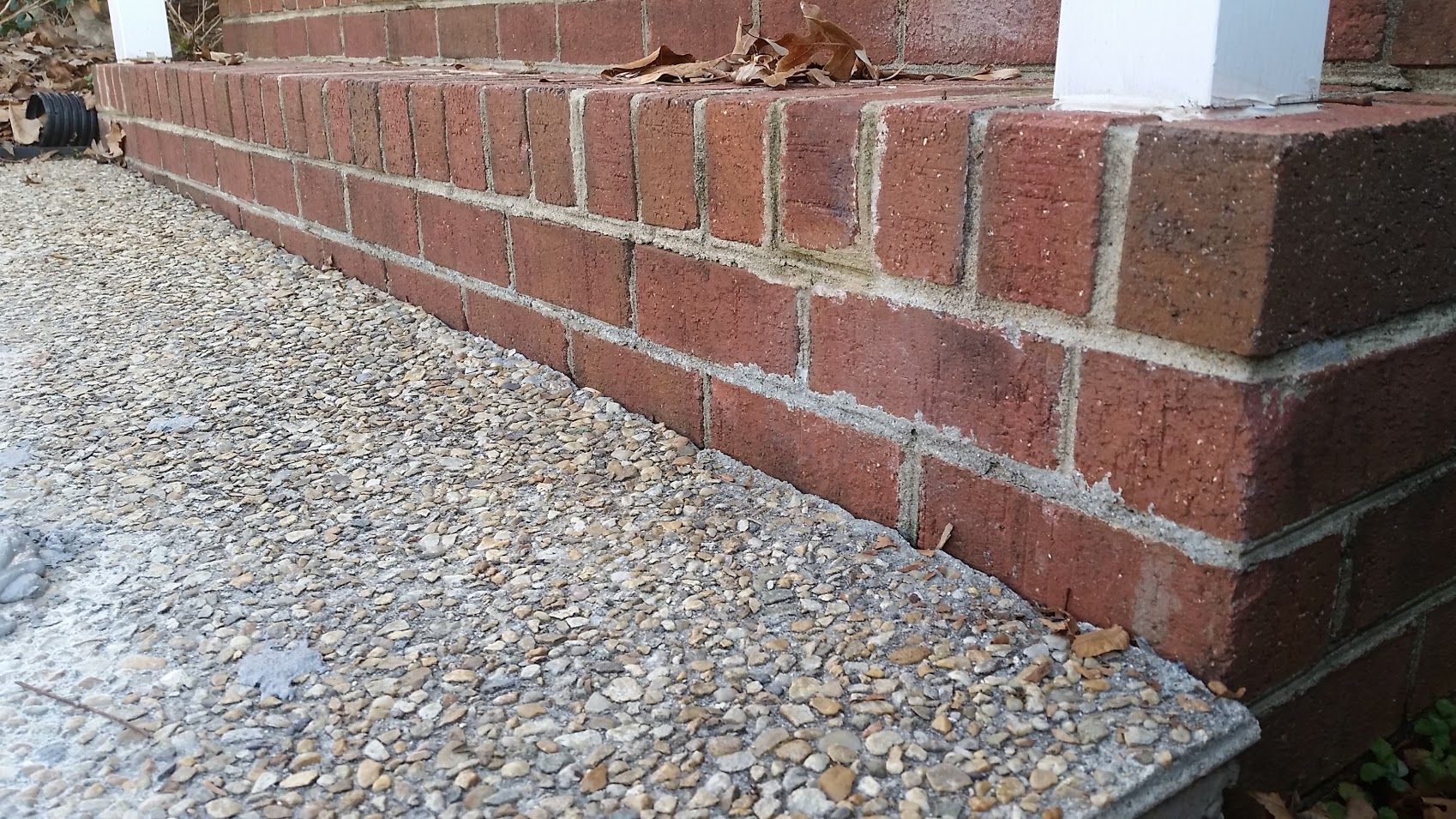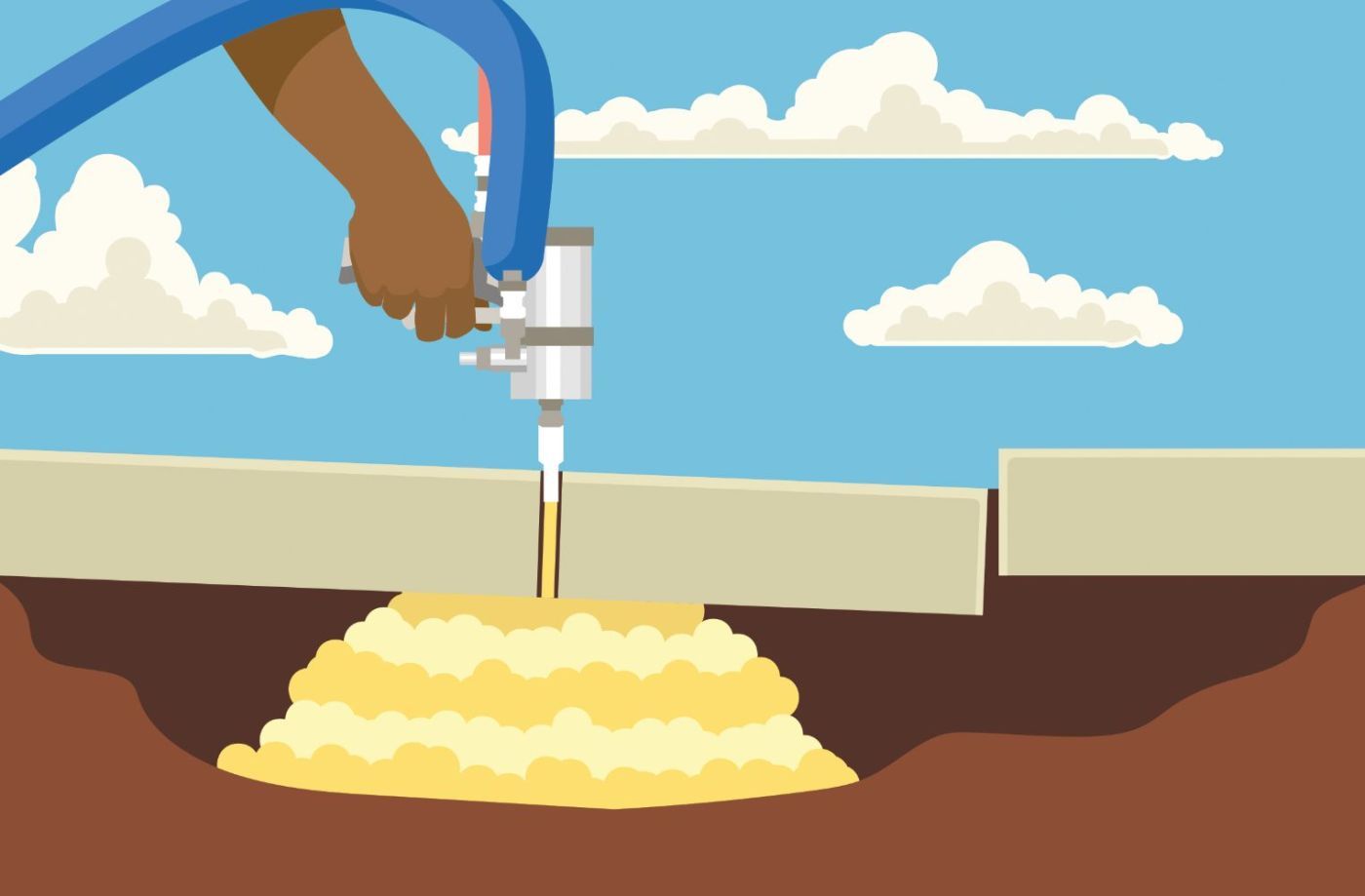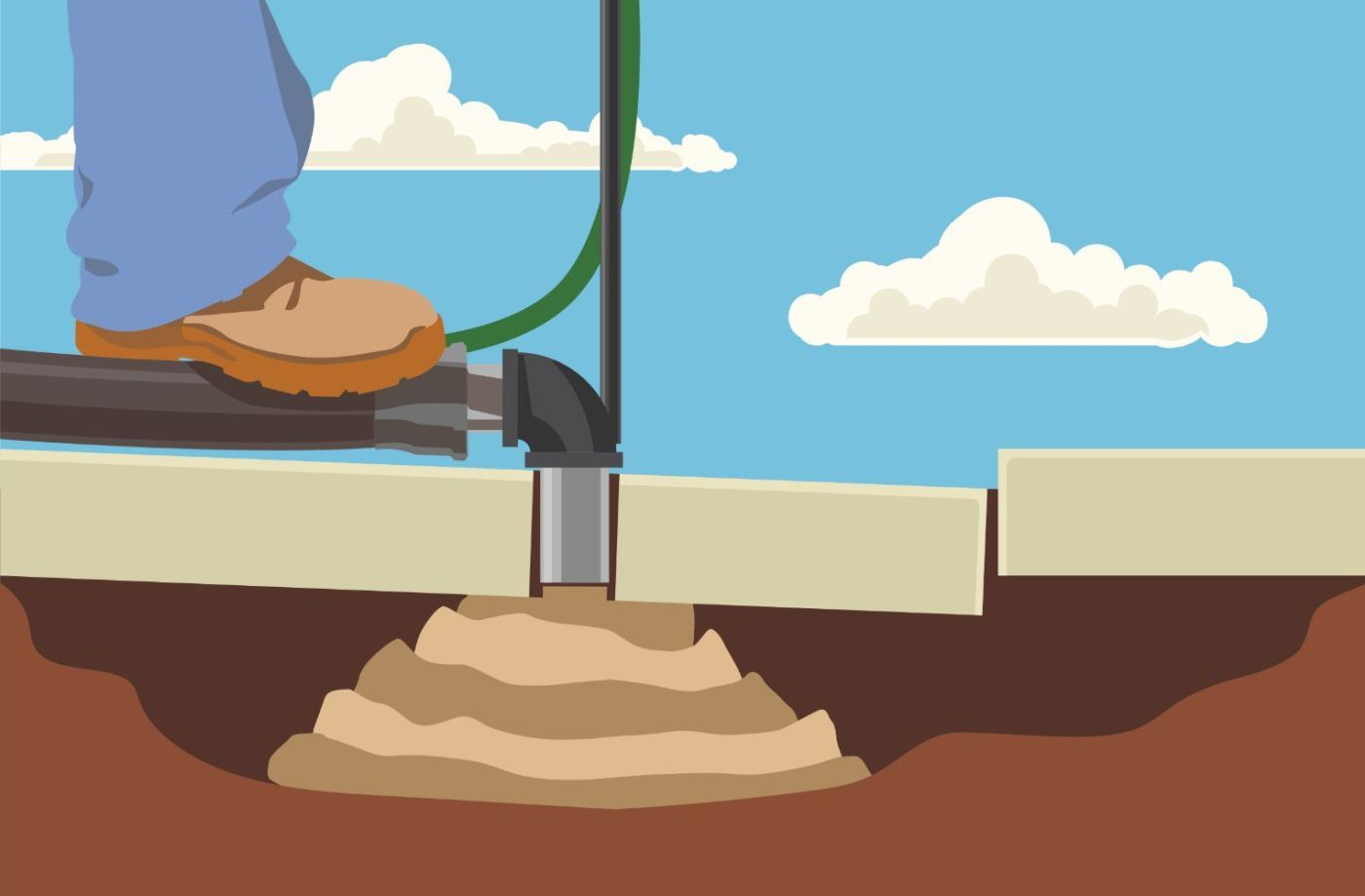
Learn about the five main factors that cause concrete to resettle after it’s been lifted with concrete leveling.
Let’s start with the good news: Concrete leveling can last for the life of the concrete itself.
And now for the not-so-good news: Concrete leveling repairs CAN fail.
Yup, we said it. While we know that concrete leveling can last for decades, we’ve also seen plenty of instances where concrete leveling has failed.
Here at A-1 Concrete Leveling, we’ve spent the last 30 years lifting settled concrete slabs back up to an even, safe position. And some of the first concrete we ever leveled over 30 years ago is right where we left it – but not all repairs have had the same fate.
With thousands of concrete leveling jobs under our belt, we’ve compiled this article to walk you through the five main reasons concrete settles after a leveling repair has been completed.
Hint: It usually has to do with the ground the concrete leveling repair is sitting on!
Reason #1: The Soil Hadn’t Fully Settled Before the Repair Took Place
In order to build a new home, usually around 6-10 feet out from the home’s foundation all along the perimeter is dug out, which significantly disturbs and loosens up the soil. Sometimes builders regrade entire sections of the lot for walkout basements, proper water drainage, etc.
But here’s where the problem comes into play: It can take between 5-10 years for that soil to settle and naturally compact after the new construction takes place.
If a concrete leveling repair is placed on top of soil that hasn’t had the time it needs to fully settle and compact, the concrete will likely resettle.
This is because concrete leveling repairs are only as good as the ground they’re on.
Compaction During the Construction Process
If the concrete is leveled on top of soil that hasn’t fully compacted, the slab will settle right along with the soil over time.
Sometimes even when all of the best compaction practices are performed during the construction process, settling can still occur with the originally installed concrete.
Water Can Accelerate Compaction
Water flowing under the concrete can actually speed up this compaction process, quickly causing your concrete to settle as the soil underneath shrinks as it dries out. This is why it’s so important that home builders create building plans that extend downspouts away from driveways, patios, steps, and walkways.
Pro Tip: We can still lift sinking concrete, even if you know the soil may still need more time to completely settle. In fact, if concrete settles too far, it can damage porches, retaining walls, or crack to a point where leveling won’t be able to recover it in the future.
Concrete leveling can usually be done again after the soil has completely settled, even for a fraction of the cost of what replacement would have been.
Reason #2: Water Erodes the Soil Under the Repair
Water flowing along the side of or under the concrete slabs erodes the soil under the concrete leveling repair, which makes both the leveling material and slab on top sink again.
This water flow is often due to downspouts pointing towards concrete or gutters overflowing onto the concrete. The direct water flow quickly erodes away the soil and therefore causes the concrete to resettle.
Depending on the slope and landscaping on your property, the water runoff flowing toward your concrete can also lead to erosion.
Keeping landscaping levels up around the slab and caulking gaps and cracks can help keep water from flowing under the slab and causing erosion.
Reason #3: The Voids Weren’t Filled During the Repair
In order for a concrete leveling repair to last as long as possible, all the voids under the settled slabs need to be filled.
But, depending on the concrete leveling method used, it can be hard to get all the voids filled, meaning there’s a high chance of resettling.
Here is an overview of each method and how it works to fill voids:
Stone Slurry Grout Leveling
Injected at low pressure and speed, the stone slurry grout leveling mixture spreads out to fill any voids under the slab before lifting the concrete. This means there is less space for water to flow beneath and erode away the soil holding up the repair and slab on top.
Total void fill also reduces the risk of the slab cracking because it is completely supported from the bottom up.
Polyjacking (Foam Concrete Lifting)
In order to control polyjacking foam during a foam concrete leveling repair, it has to be injected in shorter spurts, preventing it from spreading out as evenly under the slab.
This can even cause layers of foam to build up on top of each other, creating pyramids of material, or pillars similar to a stack of pancakes, which increases the likelihood of the slab cracking in the future.
The voids between the material pillars also leave channels where water can wash under the slab and erode away the soil around and under the layers, causing the slab to resettle.
Mudjacking
Mudjacking uses high pressure and pumping speed to inject the leveling material under the slab, which can create pyramids or pillars of material, similar to polyjacking.
The mudjacking process can also leave behind empty voids where the concrete is unsupported. Like polyjacking, these pillars can lead to the slab cracking, or facilitate erosion and resettling where there are channels for water to flow under the slab and around or under the pillars.
Material Pillars (or "Pancake Stacks")
Polyjacking:

Mudjacking:

Reason #4: Frequent Freeze-Thaw Cycles Disturb the Soil
As the weather cools off and temperatures dip below freezing, any moisture within and under your concrete slabs will freeze and expand. Then, when the weather warms up and the temperatures rise above freezing, the ice melts and the soil shrinks back down.
Simply put, freeze-thaw cycles disturb the soils with continuous expansion and contraction. Over time, this soil movement can cause resettling. Areas that experience frequent freeze-thaw cycles are at a higher risk of resettling.
Reason #5: Pests Disturb the Soil
Pests are more than just a nuisance – they can cause your concrete to resettle, too.
Burrowing animals like opossums, moles, chipmunks, woodchucks, etc. dig tunnels in the soil under the concrete leveling repair. All of that loosened and displaced soil can make the repair and the slab sitting on top sink.
It’s important to note that concrete leveling is not a pest control solution, and animals can still dig beneath any materials injected under the slab. Pest control services are a necessary part of the overall solution to prevent the concrete from resettling.
Your Next Steps
As you can see, these five reasons concrete leveling repairs fail mostly have to do more with the ground that they’re sitting on rather than the repair itself.
But as long as you pick a reputable concrete leveling contractor that’s dedicated to lifting your concrete right, you fix the original cause of the settling, and you maintain your concrete leveling repair after the fact, your concrete leveling repair can last for the life of the concrete itself.
Want to learn more about concrete leveling? Check out these related resources from A-1’s Concrete Academy:
- How Concrete Leveling Works
- How Long Does Concrete Leveling Actually Last?
- Top 4 Problems With Concrete Leveling
Interested in concrete leveling for your property? Click the link below to request a free onsite cost estimate with a member of the A-1 team:
Click Here to Find Your Nearest Location and Receive a FREE Estimate
Sarah Etler joined A-1 Concrete Leveling after receiving her Bachelor of Arts degree in English from Northern Kentucky University. As A-1's Content Marketing Manager, she works closely with industry experts to produce content that will best answer questions related to concrete repair and maintenance practices. Sarah loves living a life full of discovery and is excited every day to see what new things she can learn and share with those around her.
Topics: